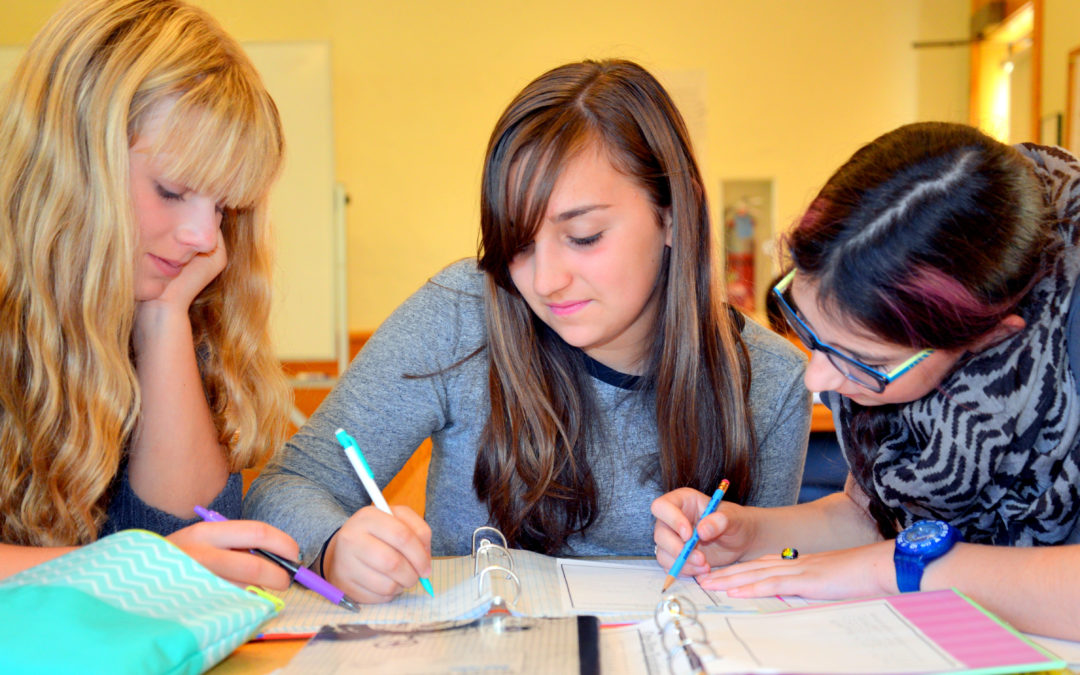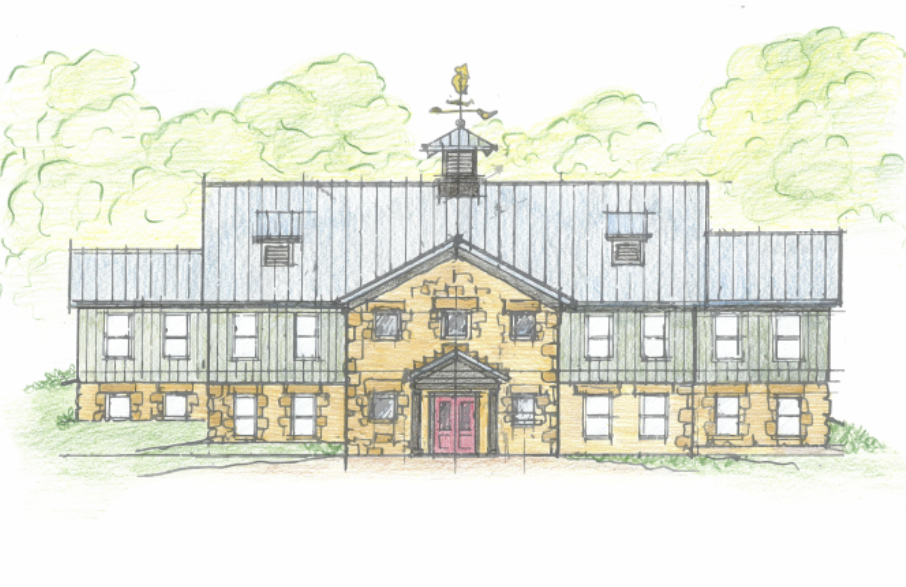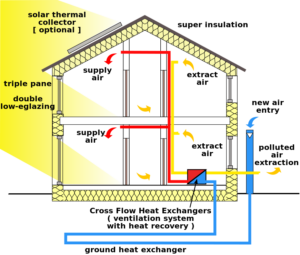
Feb 25, 2018 | Capital Campaign, Featured Posts |
February 15, 2018 marked the official end of the Campaign for Hershey Montessori School, Inspiring Global Citizens from birth through 18 years. The final campaign total will exceed $4.5 million and surpassed the original $3.7 million goal thanks to the efforts of our dedicated volunteers and the generosity of hundreds of donors. The critically needed campaign funding was utilized to complete the world’s first full continuum from birth through 18 years with an adolescent program on a working farm with a residential option. We offer our deepest gratitude for your support and commitment to the future of our students, and students all over the world. A final campaign report to the community will be available soon.

Apr 6, 2017 | Capital Campaign |
You’ve been hearing about the Passive House approach to the new Upper School building on the Huntsburg Campus. In fact, Hershey Montessori School’s Upper School will be the first school in the Midwest designed with Passive House Institute United States (PHIUS) criteria. Here’s a little information to clarify all the hype about this environmentally friendly and energy saving technology.
What is Passive House?
Simply put, “Passive house (German: Passivhaus) is a rigorous, voluntary standard for energy efficiency in a building, reducing its ecological footprint. It results in ultra-low energy buildings that require little energy for space heating or cooling.” (ref Zeller, Jr., Tom. Beyond Fossil Fuels: Can We Build in a Brighter Shade of Green?, New York Times, September 26, 2010, p.BU1)
Passive Building Principles
Passive building comprises a set of design principles used to attain a quantifiable and rigorous level of energy efficiency within a specific quantifiable comfort level. “Maximize your gains, minimize your losses” summarize the approach. To that end, a passive building is designed and built in accordance with these five building-science principles:
- It employs continuous insulation through its entire envelope without any thermal bridging.
- The building envelope is extremely airtight, preventing infiltration of outside air and loss of conditioned air.
- It employs high-performance windows (typically triple-pane) and doors.
- It uses some form of balanced heat- and moisture-recovery ventilation and uses a minimal space conditioning system.
- Solar gain is managed to exploit the sun’s energy for heating purposes and to minimize it in cooling seasons.

Image credit: By Passivhaus_section_en.jpg: Passivhaus Institutderivative work: Michka B (talk) – Passivhaus_section_en.jpg, CC BY-SA 3.0, https://commons.wikimedia.org/w/index.php?curid=9586761
The Development of Passive House Principles
Passive principles were pioneered in the 1970s by North American building scientists and builders with funding from the U.S. Department of Energy and the Canadian government. In the late 1980s the German Passivhaus Institut (PHI) built on that research and those principles, and developed a quantifiable performance standard that continues to work well in the Central European and similar climate zones. The PHIUS website offers an excellent history lesson here.
Passive House Applications
Passive building principles can be applied to all building typologies–from single-family homes to apartment building to offices and skyscrapers.
Passive design strategy carefully models and balances a comprehensive set of factors including heat emissions from appliances and occupants–to keep the building at comfortable and consistent indoor temperatures throughout the heating and cooling seasons. As a result, passive buildings offer tremendous long -term benefits in addition to energy efficiency:
- Superinsulation and airtight construction provides unmatched comfort and even in extreme conditions.
- Continuous mechanical ventilation of fresh filtered air assures superb air quality.
- A comprehensive systems approach to modeling, design and construction produces extremely resilient buildings.
- Passive building is the best path to Net Zero and Net Positive buildings. because it minimizes the load that renewables are required to provide.
The Performance Standard
In practice, the PHIUS Technical Committee and PHAUS members building projects have learned that a single standard for all North American climate zones is unworkable. In some climates, meeting the standard is cost prohibitive, in other milder zones it’s possible to hit the European standard while leaving substantial cost-effective energy savings unrealized.
Consequently, the PHIUS Technical Committee worked on adapting the performance metric to North American climate zones, using the European metric as a baseline. An overview of those climate zone specific standards is available here.
Why did we do it?
Hershey Montessori School is committed to care of the environment, and thus committed to implementing as environmentally friendly and sustainable construction principles as possible. We are proud to be the first school in the Midwest to be designed with the cutting-edge standards of the Passive House Institute of the United States. PHIUS building criteria will create significant savings in operation costs and reduce energy consumption and provide an excellent model for other public buildings.
For more information on Passive House design, visit the Passive House Institute United States website.

Jul 20, 2016 | Capital Campaign, Current Parents, Events, Featured Posts, Life at Hershey |

We continue to invite you to donate to the Hershey Montessori School Capital Campaign as we move toward our ultimate fundraising goals of enhancing the Montessori education model to our students. We wanted to take a moment to thank all the families and friends as well as the Elliot-Montminy Family for the amazing outpouring of support for this campaign during the Elliot-Montminy Family Challenge Grant time frame. Thanks to you, we raised $40,000 for the Hershey Montessori Capital Campaign!
The campaign benefits both campuses of the school. The campaign’s goal is to cover the costs of construction for the upper school classroom building on the Huntsburg Campus for the new 10th, 11th and 12th grades, provide program and capital improvements for the Concord Campus as well as initiate a study to most effectively respond to increasing enrollment in a long-term, strategic way. The campaign also will raise additional funds for the endowment to increase sustainability for the whole school and to expand financial aid.
This is a historic campaign as once successful, Hershey Montessori School will be the first school in the world to offer a complete continuum of Montessori education that most closely replicates Dr. Maria Montessori’s vision which includes an option of a residential component for adolescents on a working farm.
Donate online here or read more about Giving.

Apr 25, 2016 | Capital Campaign, Current Parents, Life at Hershey |
The Plain Dealer’s on-line report (see link below) on the growth of Montessori in the region certainly includes much coverage about Hershey Montessori School. We are very grateful that news about Montessori is reaching more people. I would like to correct one misquote to qualify that “Hershey Montessori School is the first school that we know of to serve parents and infants through adolescence with an adolescent land-based residential program.” I wish to recognize that there are a growing number of adolescent programs through the high school level across the nation. One of the unique aspects about Hershey is that we are fortunate to be able to offer a developmental continuum beginning with infancy and a residential option on a working farm for adolescents.
~ Paula Leigh-Doyle, Head of School
Read Plain Dealer Article






